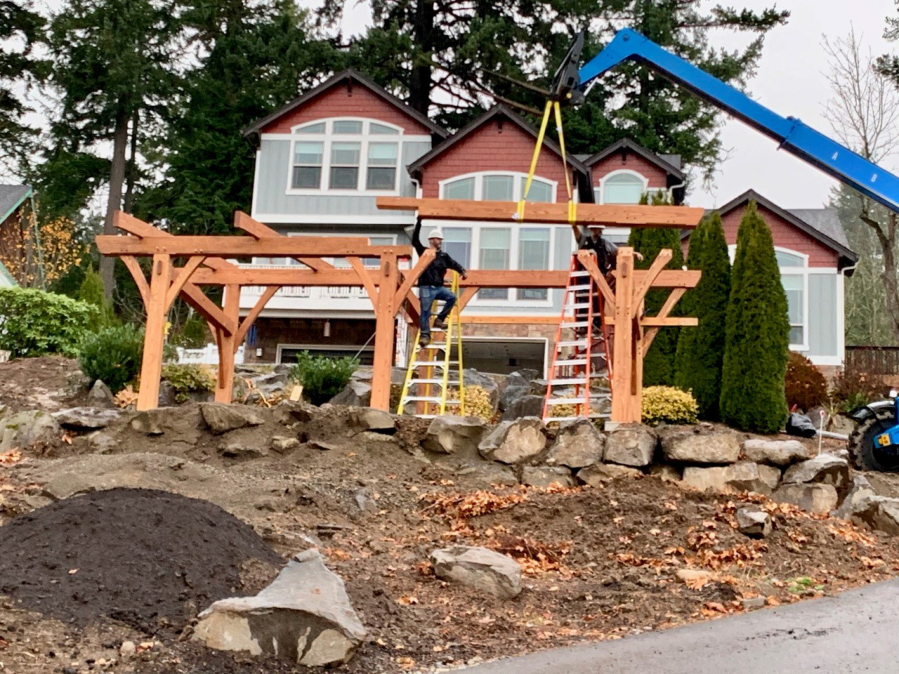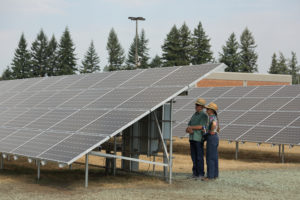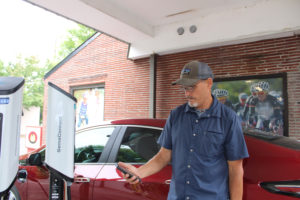When most people think of solar-powered homes, they envision solar panels affixed to a flat roof or sitting in rows in a field.
But one Camas couple is proving you don’t have to have a flat roof or lots of acreage to go solar.
“When we decided to move to Camas for retirement, we got a house two years ahead of time,” explains Randy Friedman. “Unfortunately, this house was not suited for rooftop solar given its layout and location at the edge of the forest. Luckily, there was a big terrace in front that would be perfect for solar.”
Friedman and his wife, Debbie Nagano, had experience with solar power when they moved to Camas this summer. They’d powered their Nissan LEAF electric car using solar power at their previous home in Sacramento, California, and Friedman, a longtime renewable energy advocate who worked as the California government affairs manager for the United States Navy’s Southwest Region, had seen the human cost of our nation’s reliance on fossil fuels.
“I watched many of my colleagues deploy for long periods in the Middle East. Like it or not, the primary reason was protection of oil supplies,” Friedman said. “It made me want to focus my personal life on alternatives (to fossil fuels).”





